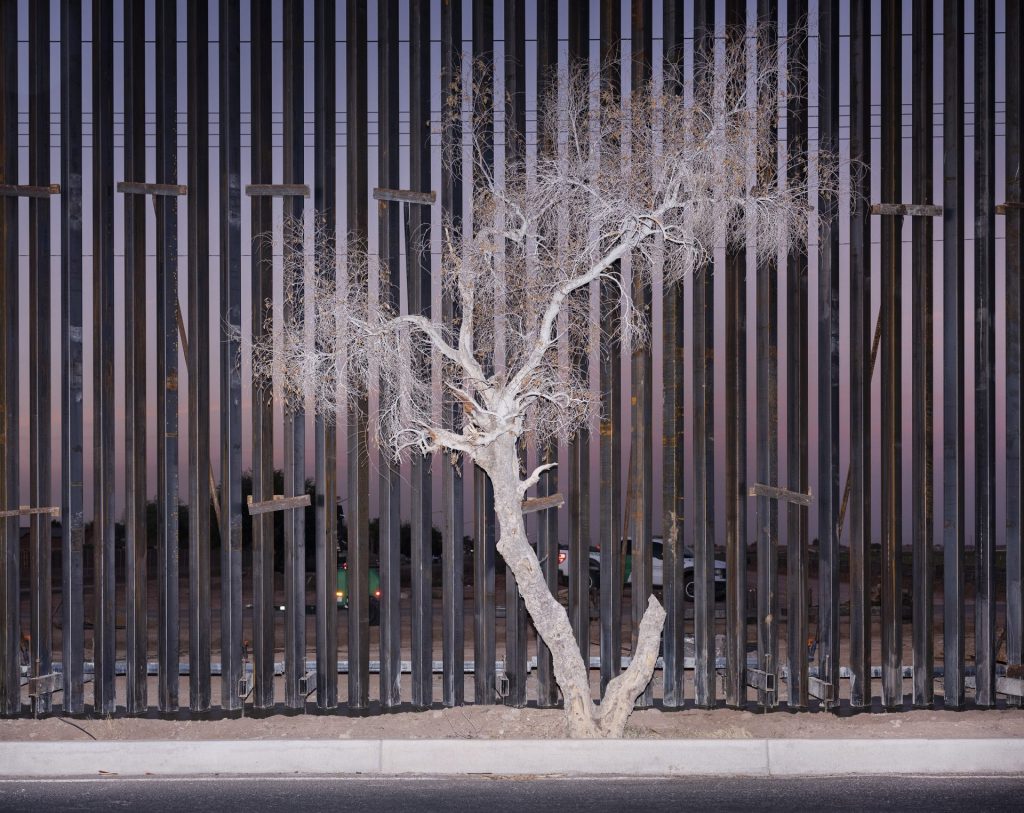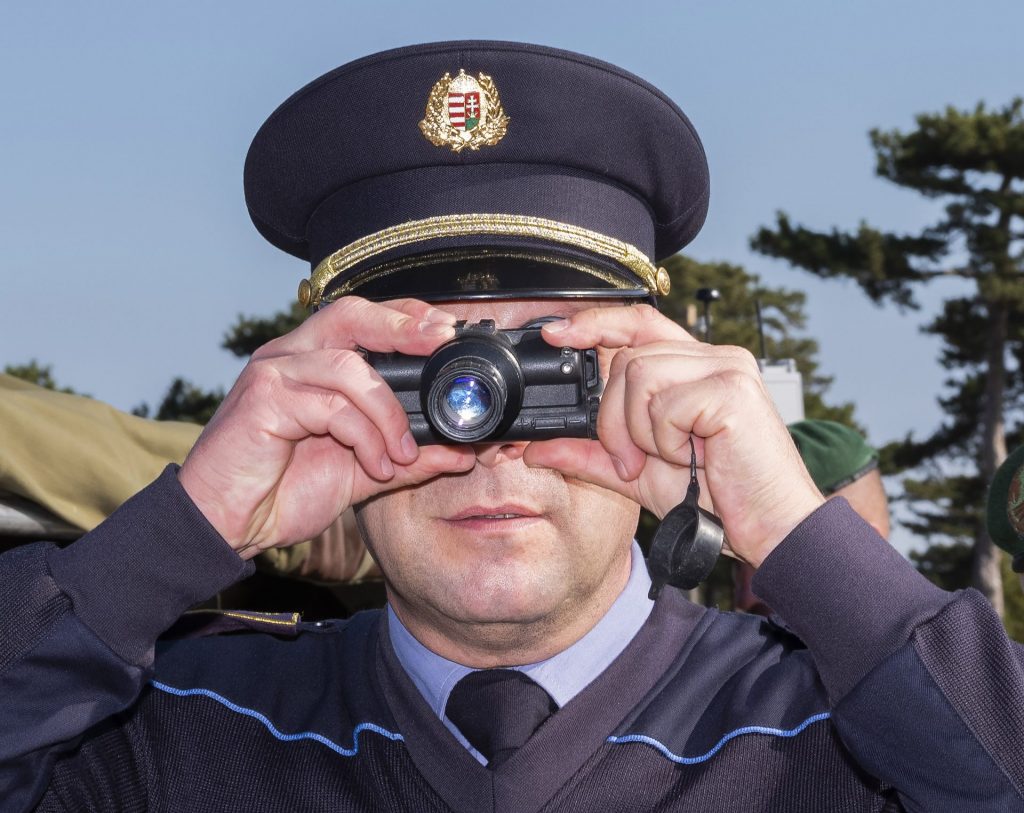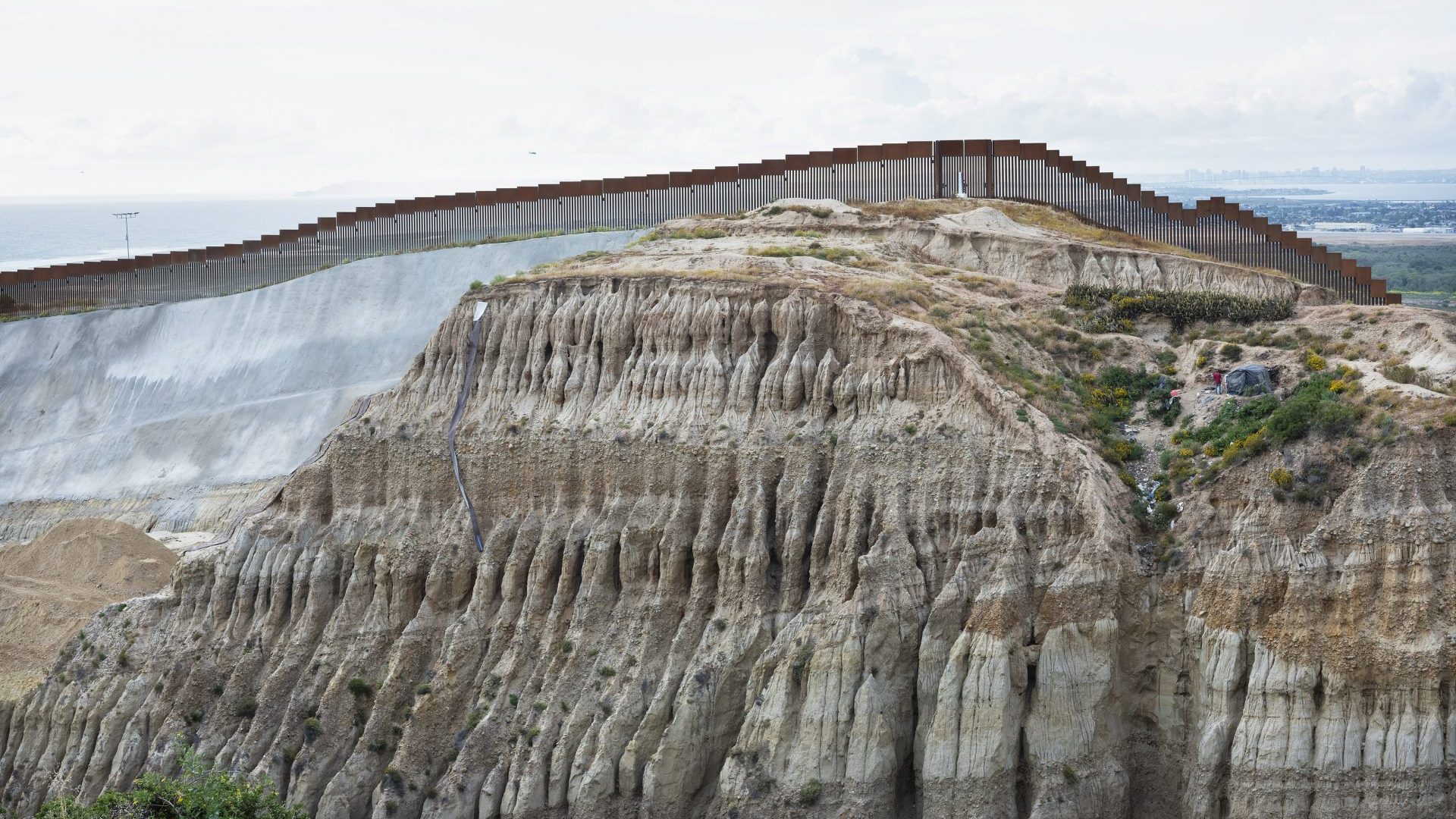A mesquite tree, weathered by time and the elements, stands defiant in a dusty landscape. Behind it, an imposing steel-slat fence looms, stretching out of the top of the frame.
Through the slats we can see American cars, freedom and a hint of dawn.
The slats are part of the infamous border wall, so enthusiastically championed by Donald Trump, which stretches across the south of the US
from the Gulf of Mexico to the Pacific Ocean. The picture appears in a boxed
set of four books on the theme of walls by Polish photographer Rafał Milach.
I Am Warning You (#13767 + I Am Warning You + Death Strip + Collected Essays) focuses on three border walls – the US-Mexican, the Hungarian-Serbian-Croatian and the Berlin Wall – alongside a collection of essays. The book was designed by Ania Nałęcka-Milach and the texts are by Michael Dear, Antje Rávic Strubel and Ziemowit Szczerek.
The work offers a telling critique on the role of border defences as demonstrations of power and examines how they are used as propaganda by populist politicians, playing on the fear of the people and stoking up nationalism and racism.
Milach, 43, who grew up in Poland during the collapse of the Soviet Union, understands life under state oppression and is keenly aware of the fragility of democracies. He has spent much of his career photographing the vanities and corruption of the former Eastern Bloc countries.
Trump’s decision to build a vote-catching wall, higher and stronger than anything that was there already, coincided with the photographer’s ambition to create a story that “would geographically jump out of the region where I was working”.
The results include what you would expect: sweeping panoramas of the
wall – 30ft high in places – as it snakes its monstrous way through 4,000 miles of barren countryside, daunting in its steel and barbed-wire brutalism.
There are other, less expected, vignettes: the ugly symbol of Trump’s power game is countered by humdrum scenes such as a humble homestead divided by fencing, a man pruning a mesquite tree with the wall in the background, faded graffiti; and, less humdrum, a boy carrying a dog that has been dyed bright pink and a man tattooed with the face of the drug baron Joaquín Guzmán (better known as El Chapo) and the word Sinaloa – one of the region’s biggest cartels.

Milach presents the viewer with a challenge, however. Apart from one insert towards the back of each collection, there are no captions and no obvious explanations as to what he has in mind and, as a further challenge, he specifically asked the writers of the essays not to refer to the pictures he had taken.
But there are clues. He discovered a report by Homeland Security made in response to Trump’s Executive Order #13767, which outlined the requirements of the wall when it came to dealing with, for example, the
problems of breaching and scaling and the tests that should be carried
out on its prototypes.
Milach named the collection #13767 after the order and reproduced the pages of the report as a counterpoint to his imagery, but there is little help
for the reader here because nearly every sentence is redacted.
Milach’s reaction is to fill the gaps with poignant pictures of clothing –
pullovers, scarves, jeans, a baseball cap and a bomber jacket – all tangled
up and torn by the barbed wire as their owners made desperate attempts
to reach the other side.
Milach says: “The prototypes were nothing else but a demonstration of
power. They were not integrated into the new structure of the border wall,
in fact, there were really very few miles of actual new build. Most of it replaced dilapidated sections made of steel mats, which had been used as
landing strips for planes in the Vietnam war, for example, or it duplicated existing barriers.
“The propaganda was that we’ll stop the human trafficking, the drug trafficking and sort out the cartels, but it doesn’t work like that. The cartels
have started to build tunnels underneath the walls and even hired professional mining companies.
“Some even have railway tracks. People adapt. There is nothing the government can do. People commute every day to California.”
Despite doubts about the efficacy of walls, never mind their morality, countries around the world have put up at least 70, including the UK’s own
counter-intuitively named Peace Walls in Northern Ireland, and now, the
most recent, on the border between Belarus and Poland.
When we talked, Milach had recently visited the border where Alexander Lukashenko, the president of Belarus, has weaponised refugees by promising them safe passage into Poland or Germany, then leading them to a frontier he knows they will not be allowed to cross.
“It is unbelievable that you can use people like a shield or a weapon to escape the situation at the border,” Milach says. “When I see what is going
on I feel that we [Poland] are playing with the same values as the Lukashenko regime. The refugees were in a kind of death zone with two
lines of guards not letting people into Poland or back into Belarus.
“The Polish guards pushed the refugees into the forests. Some have been there for weeks, they were exhausted, dropping down, it was raining. People were dying. The other day a one-year-old kid died and a lot of deaths have not been reported.
“We are violating the Geneva Convention by not accepting refugees asking for asylum. I am not a politician, I don’t have the solution, but I have an answer for this very basic behaviour, which is not to let people die in the forest because of exhaustion, because of frost, lack of food and water.”
He is adamant that the nationalistic policies that encourage the building of
walls give an “armour to the politicians” in Poland and in neighbouring Hungary, where the prime minister, Viktor Orbán, ordered a 500km fence to be built to prevent refugees crossing into his country.

Milach says Orbán is trying to resurrect the glory of the 18th and 19th centuries when the Austro-Hungarian empire was powerful. But the fence is a monument, he says, to the fall of humanitarian values.
His photographs from the Hungarian border are entitled I am Warning You after the automated message played in several languages to the refugees: “Attention, attention. I’m warning you that you are at the Hungarian border. If you damage the fence, cross illegally, or attempt to cross, it’s counted to be a crime… you can submit your asylum application at the transit zone.”
There is little to humanise the bleak impersonality of this border. There are miles of barbed wire almost hidden in the undergrowth, a drone ready for take-off, surveillance cameras, watchtowers and slavering dogs straining to be released from cages.
“The electric fences take me back to my own ground here in Poland in which the barbed wire is reminiscent of Auschwitz though, of course, it is not really comparable,” Milach says.
One of the few figures in the collection is a border guard taking a photograph. We see what he sees in the ensuing pages; they open out into a panorama that at first seems to be nothing more than a tidily ploughed field with a line of wheat in the background. It’s a serene, rural idyll.
Turn the page, zoom in closer, and there’s a fence alongside the wheat field. There is no way through.
Obviously, there can be little reportage on the Berlin Wall now it no longer exists. “It was a very difficult situation for me to touch because the Berlin Wall has been so exploited visually, journalistically and in so many books,” Milach admits. “What could I possibly add to this basket?
“So that was my hesitation, but I gave it a try. I went around photographing the death strip that was in between the two walls which separated East from West – and was offered bits of the wall in a flea market.”
That’s what he could add to the basket. If ever there was a symbol of an evil regime crumbling into dust, it’s those bits of concrete and brick. Small pictures of them are superimposed on each page with the price included – from £4 to £6,150.
Once lifted, they reveal pictures of what’s left behind: a watchtower, redundant surveillance cameras, rusting gates and the inevitable traces of barbed wire.
The ugly lumps contrast with scenes of freedom such as cheerful crowds by
the Brandenburg Gate and Muslim girls letting balloons soar away from
the Holocaust Memorial.
“Even though a physical wall disappeared, it doesn’t mean the division is no longer here,” Milach says. “There is still an increasingly anti-refugee rhetoric in the countries that once celebrated the opening of their borders to the West.
“But it is good to remember that all walls eventually fall. There is a YouTube movie that shows two dogs on either side of a wall, barking at each other through a gate. Really aggressive. When the gate is opened, they stop, they just go away. They don’t go for the throat of their adversary.
“A wall is such a metaphor. It shows the power but also the weakness of a nation.”
I Am Warning You (#13767 + I Am Warning You + Death Strip + Collected Essays) by Rafał Milach. £45. Published by GOST Books www.gostbooks.com




